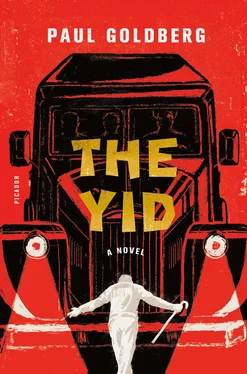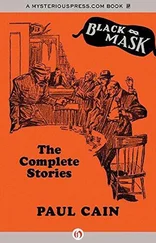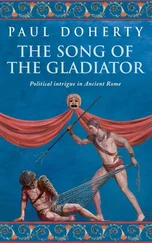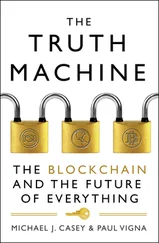He opens the window to let in the frost, puts on his riding breeches, and positions his twenty-kilogram weights for his daily hour-long workout.
At 5:45 a.m., he emerges from the entryway at 1/4 Chkalov Street, takes in a deep nose-full of February air, and, carefully analyzing the scents, looks around. People who live secret lives borrow behavioral characteristics from wolves.
Those prone to stop and ponder our place in the universe should be intensely interested in the powerful perturbations Moisey Semyonovich began to experience sometime before dawn, an hour or so before Ol’ga Fyodorovna stealthily left his room.
Though tone-deaf and completely lacking musical education, Moisey Semyonovich would describe his condition as an ever-intensifying musical barrage. He is more familiar with marches than symphonies, yet that morning a symphony in his head is bursting out beyond the intensity of any known concert-hall-bound crescendo.
It is said that religious fanatics can whip themselves into similar frenzy through a combination of fasting and devotion, but Moisey Semyonovich is innocent of mortification of the flesh and agitation of the soul.
The night before, he had a satisfying meal of herring and boiled potatoes. After his wife, an army hospital physician, left him, Moisey Semyonovich became so skillful a cook that he looked forward to preparing meals and rarely missed one. Any notion of communication with a higher power would cause him to smile dismissively. He is proudly earthbound, ideologically lashed to the ground.
The sound is soft at first. He is aware of it before he fully awakens that morning. It continues to gain in intensity as he works out with his weights, takes a sponge bath, brushes his teeth with chalky powder, and dresses.
It’s the same sound that visited him when he was fifteen, in 1913, in the shtetl Morkiny Gorki. The self-defense committee was diverse. There were Marxists aided by Zionists, thieves, butchers, tailors, tradesmen, and young Moisey Semyonovich, an apprentice to a druggist in Mogilev, who devoted his nights to the study of natural sciences. Their goal was limited enough: when the bandits come, fight back.
The band requisitioned knives and axes from all the Jewish homes, and the butchers in their midst contributed all their tools.
That night, as he crouched behind a bench by the synagogue’s stoop, Moisey Semyonovich ran his index finger along the blade of his cleaver. He felt a tremor, a spasm, really. It had a peculiar, oscillating quality, intensifying, weakening, reaching an extraordinary peak, then, topping it, another. Was it fear? He didn’t know how this state of mind would affect him when the pogromschiki , the bandits, came. Would he be left incapacitated by these terrifying blasts within his skull?
The mobs were led by a Russian nationalist group called the Black Hundreds, which was connected to the Czar’s secret police.
When the Black Hundreds came, his hand did not tremble. Though it had the dynamics of a seizure, the feeling was its direct opposite. The druggist’s apprentice fought his way into the thick of the mob, learning that his calling to ease suffering was counterbalanced by an extraordinary capacity to maim and kill.
Later that night, he stood on the bloodstained cobblestones in the shadow of the synagogue, feeling the dissipation of the glorious crescendos. The new sensation, whatever it was, deserved a name, he thought, and the name came to him the instant he began to seek it: gerechtikeit. Justice.
Involvement with militant Jews led Moisey Semyonovich to a wider group of young men and women committed to building a separate Jewish future within the greater social democratic world. They called themselves the Bund, short for de Algemeyner Yidisher Arbeter Bund in Litve, Poyln, un Rusland. Over the years, the Bundists sided with various Marxist radical factions. Since this was a Jewish radical group, everyone fought. The principles were worth fighting over. Moisey Semyonovich sided with the terrorist wing.
He was never caught, but he was the man who set the explosives that wounded a second-tier czarist official in Mogilev. He received neither blame nor credit for that action, which was just as well. The Bund didn’t formally endorse terrorism but didn’t condemn it in individual cases.
Later, Moisey Semyonovich joined the Mensheviks in their battle against the Bolsheviks. They confronted Zionism as a harmful escapist movement. Some members of the Bund — including Moisey Semyonovich — advocated imprisonment as punishment for the act of speaking Hebrew, the language of escapism (that is, the rabbis and Zionists). He was a member of a nation within a nation: progressive, Yiddish-speaking workers and peasants. Of course, he was a Marxist, and as such believed that we are defined by our relationship to ownership of the means of production, but as a practical matter, why not allow these people to identify themselves as, say, Jews? Inevitably, their national identity will wither away, but why must there be a rush to reach that day?
Moisey Semyonovich wasn’t seeking a separate, safe future for himself and his fellow Yiddishists. He threw himself into every conflict he could, and whenever fate tested him, which it did on many a death-defying charge and hopeless retreat, Moisey Semyonovich became composed, machine-like.
Too often, Jews are described as victims of historical calamities. Moisey Semyonovich was not a victim. His goal was not to survive. It was to prevail.
Alas, Bolsheviks prevailed, Mensheviks were slowly slaughtered, and the Bund was classified as a counter-revolutionary organization. It wasn’t enough to say that you were wrong and apologize for your ideological mistakes. There was no tolerance for deviation, past or present. If you apologized, you hastened your demise. Moisey Semyonovich knew that evidence that would tie him to the Bund existed somewhere on Lubyanka and yet, for some reason, the unexpected remission of his deadly political disease continued.
During the Great Patriotic War, he believed that he was at greater risk of being killed by SMERSH — the Soviet organization charged with rooting out spies — than by the Germans. He was wounded twice, and he lost much of his family.
His necrology was typical. His parents and his sister were killed in late July 1941, soon after the Nazis captured Morkiny Gorki. The Nazis deployed a classic method for the liquidation of relatively small groups of rural Jews. A long trench was dug in the forest clearing outside the village, the Jews were pushed into it, and the ditch was covered with dirt. This approach enabled the preservation of bullets for the front, as only those Jews who had the capacity to climb needed to be shot. The peasants said the ground over the ditch rose and fell for two days, as people tried to dig out or perhaps just continued to breathe.
Moisey Semyonovich had a wife and children, too. But they didn’t survive the train journey from Moscow to evacuation in Siberia. When German planes attacked their train and it stopped, his family was mowed down as they ran toward the woods.
Wounds and losses unchained Moisey Semyonovich from concerns about his life, limbs, and family, freeing him to make his machine gun into a sword of justice that meted out punishment consistent with the crime.
In February of 1953, with the newspapers declaring war on the international Jewish conspiracy, a sense of history ingrained in his bones tells Moisey Semyonovich that a scheme similar to Hitler’s Final Solution of the Jewish Question is about to be revealed. He senses that — just as was the case with the Black Hundreds in his pre-terrorist, pre-Bund days — the mobs will be deployed. The next war on the Jews will be a people’s war.
Why arrest those clueless doctors? Why this anti-Semitic frenzy? Why the outbursts of blood libel?
Читать дальше












